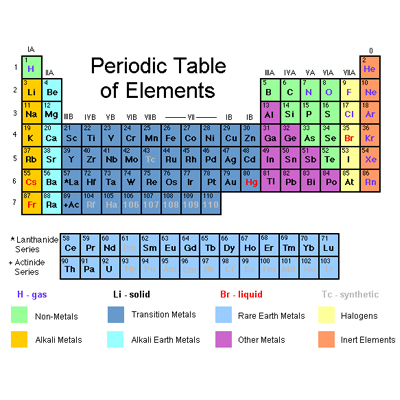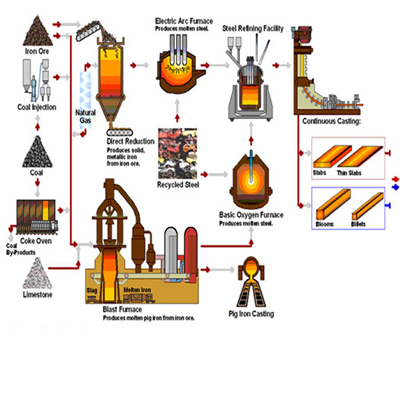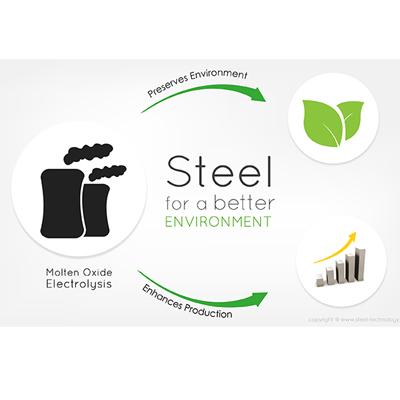The Impact of Raw Material Quality on Steel Product Performance

Introduction:
In the vast landscape of industrial production, steel stands as a cornerstone material, essential for constructing buildings, manufacturing machinery, and serving as the backbone of numerous infrastructure projects. However, the journey from raw materials to the final steel product is a complex alchemy where the quality of inputs plays a pivotal role. This article explores the intricate relationship between raw material quality and the performance of steel products, delving into various aspects that highlight the importance of precise control over the manufacturing process.
Mechanical Properties:
The mechanical prowess of steel is undeniably one of its defining characteristics. Tensile strength, yield strength, and overall structural integrity are all influenced by the quality of raw materials. High-quality inputs contribute to the development of steel with superior strength and toughness. This becomes particularly crucial in applications where the material is subjected to heavy loads, dynamic forces, or harsh environmental conditions.
Chemical Composition:
The chemical composition of steel, driven by alloying elements, is a critical factor in determining its properties. Carbon, manganese, chromium, nickel, and other elements are carefully balanced to meet specific performance requirements. For instance, the addition of chromium enhances corrosion resistance, while controlled carbon content contributes to hardness and heat resistance. The precision in controlling the alloying elements starts with the quality of raw materials.
| Read More: Forging Excellence: Ensuring Quality Raw Materials in the Steel Industry |
Uniformity and Consistency:
Inconsistencies in raw material quality can lead to variations in steel composition and microstructure. This lack of uniformity can pose challenges for manufacturers striving to meet stringent specifications. High-quality raw materials ensure a more homogeneous steel product, allowing for predictability in performance and facilitating adherence to precise manufacturing standards.
Microstructure and Grain Size:
The microstructure of steel, including factors like grain size and distribution, plays a pivotal role in its response to heat treatment. Quality raw materials contribute to a more uniform and refined microstructure, enhancing the steel's ability to undergo heat treatment for specific applications. This, in turn, affects the material's hardness, ductility, and overall mechanical properties.
Corrosion Resistance:
The presence of impurities or non-metallic inclusions in raw materials can impact the corrosion resistance of the final steel product. High-quality raw materials with lower inclusion content result in cleaner steel, making it more resistant to corrosion. This is especially crucial in applications where exposure to corrosive environments is a constant threat, such as in marine or chemical industries.
Weldability and Formability:
Cleanliness in steel, achieved through high-quality raw materials, is a key factor in determining its weldability and formability. Clean steel ensures better joint integrity during welding processes and facilitates smoother fabrication. Manufacturers benefit from reduced defects, improved efficiency, and increased confidence in the reliability of the final product.
Cost and Efficiency:
Beyond performance considerations, the quality of raw materials has implications for the overall cost and efficiency of steel production. High-quality inputs often lead to more efficient manufacturing processes, reducing the need for extensive quality control measures and minimizing material wastage. This not only enhances the economic viability of production but also contributes to sustainable practices within the industry.
Conclusion:
In the intricate relation between raw materials and steel product performance, every element matters. The mechanical strength, chemical composition, uniformity, microstructure, corrosion resistance, weldability, and overall efficiency of steel are intricately tied to the quality of the materials used in its production. Manufacturers, engineers, and stakeholders in the steel industry must recognize the profound impact of raw material quality on the end product, fostering a commitment to precision and excellence from the earliest stages of production. As we continue to build and innovate, understanding this nexus becomes imperative for creating steel products that not only meet but exceed the demands of diverse and evolving applications.











